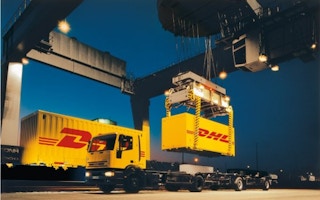A spate of sustainability-related announcements from some of the world’s largest logistics companies show these firms mean green business, Chen He reports.
Running through the heart of Mexico City is Metrobus, a Bus Rapid Transit (BRT) system which carries more than 450,000 riders daily. In 2010, EMBARQ, a nongovernmental organisation that addresses urban transportation problems, showed Metrobus how to eliminate about 114,000 tonnes of carbon dioxide pollution. With funding of $500,000 and expertise from logistics giant FedEx, EMBARQ will help the BRT system expand and grow to be even more efficient. FedEX uses its experience in managing life cycles of vehicles to help Mexico City transit officials improve bus fleet management.
This is just one of the ways FedEx is helping to tackle environmental problems in the destination countries it serves. Other sustainability efforts focus on FedEx’s own operations.
Fedex recently published its 2010 Global Citizenship Update which demonstrates how it consistently invests in sustainable and efficient business practices such as switching to fuel-efficient Boeing 777F aircraft and electric vehicles to help reduce its carbon dioxide emissions.
FedEx’s report outlines other achievements, including raising environmental awareness through recycling and encouraging fuel efficient driving habits. One such programme, Eco-Driving, is designed to lower the impact of vehicles on the environment by teaching FedEx couriers driving habits that reduce carbon emissions, including gentle acceleration, flat speed and the reduction of idling times.
Jeremy Goldstritch, managing director of FedEx Ground operation in Japan, where the Eco-Driving program first started, noted in the report: “Using fuel is the nature of our business. If you have engagement and awareness from the front line to the executive level, you can make a huge difference.”
Meanwhile, United States-based logistics firm UPS is taking a different approach.
The firm purchases carbon offsets certified by The CarbonNeutral Company. Companies that need or want to reduce their carbon footprint can offset the carbon emissions of their operations by investing in recognised carbon reduction projects elsewhere.
As a high profile example of the use of carbon offsets, UPS recently announced its plan to join The Dave Matthews Band to create a more environmentally-friendly concert tour this past summer.
UPS took a three-step approach to the tour logistics. The company calculated the most efficient transport solution for the huge stage, lighting and production equipment, measured the carbon footprint of the moves, and then purchased certified carbon dioxide offsets to mitigate the emissions.
UPS also pays attention to sustainable packaging as part of its strategy. To help raise awareness of the need for sustainable packaging, UPS launched its Eco Responsible Packaging programme, which recognises the sustainable packaging efforts of its shipping clients by attaching programme logos to qualified shipments.
Germany-headquartered DHL, another player in the logistics industry, has also joined this green movement. The company is providing a carbon-neutral shipping option through its GOGREEN services, which offset transport-related carbon dioxide emissions by investing in climate protection projects such as a wind power plant in Fujian, China. Business partners opting for the service receive a GOGREEN sticker on their shipments.
Recently, DHL introduced a new service called GOGREEN Carbon Dashboard, which allows its customers to track the carbon emissions of different modes of transportation from their own computers. The service uses DHL’s carbon reporting software to provide its customers with calculations of the carbon emissions of their shipments - information they can use to optimise their supply chains and reach their carbon reduction targets.
Other green innovations implemented by DHL include Smart Trucks, which select the shortest and fastest routes for drivers based on intelligent pick-up and delivery technology. The vehicle helps to minimise the firm’s environmental footprint by reducing distance travelled up to 15 per cent, and is used in emerging markets such as India, which are densely populated and have rapidly increasing traffic congestion problems.
The green initiatives of the world’s largest logistics businesses coincide with an increasing awareness of the accumulated environmental impacts of moving goods from place to place.
In an e-mail interview with Eco-Business, Paul Graham, chief executive of Asia Pacific DHL Supply Chain said, “Consumers across the world are increasingly beginning to understand the significance of ‘green’ logistics and the cost savings it will bring in the long run.” He added that improved logistics will progressively be seen as essential to achieving lower carbon emissions across the economy.
According to a survey conducted by DHL, almost 63 percent of business customers regard transportation as a key area for reducing their carbon footprint. More than two-thirds of those have either already adopted concrete carbon reduction targets, or have plans to do so.
Mr Graham also cited the newly established Sustainable Supply Chain Centre Asia Pacific in Singapore, launched last year by DHL and The Logistics Institute of Asia Pacific, as an example of the growing focus on sustainability in logistics within Asia.
But, he said the industry’s sustainability initiatives risked losing momentum as a result of the economic downturn and the uncertainties of alternative and fossil fuel prices.
Executive director of the Supply Chain & Logistics Institute at Georgia Tech in the United States, Professor Donald Ratliff, agreed that the industry’s sustainability efforts are cost dependent. He said: “Using less fuel results in less cost and fewer carbon emissions, so it is a win for the company and a win for the environment. The challenge will come when being more sustainable means incurring more cost.”










